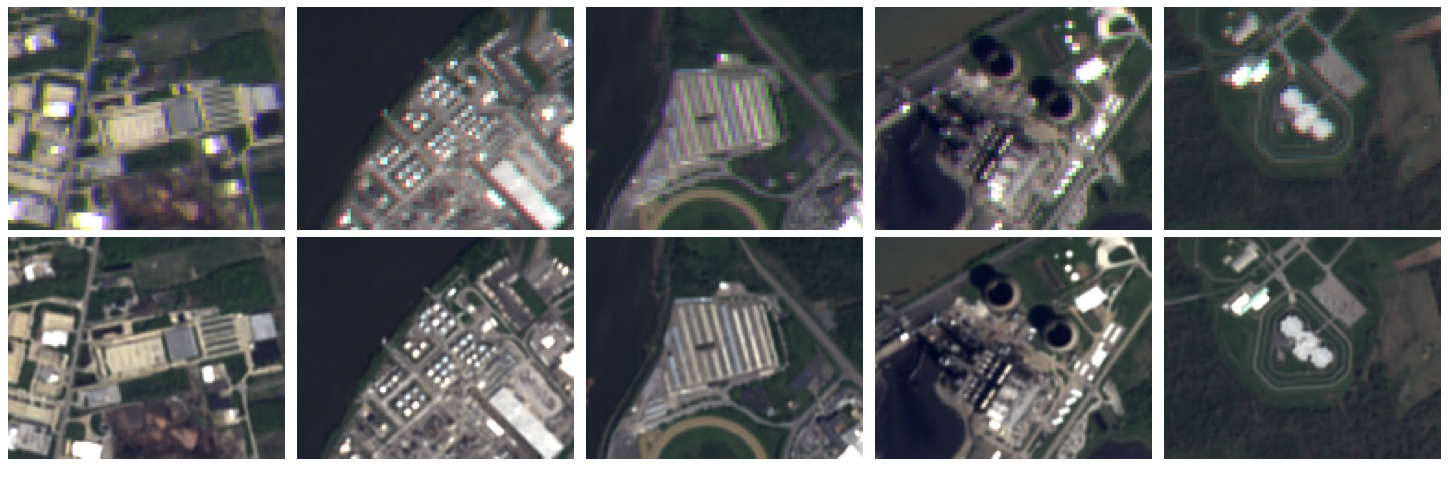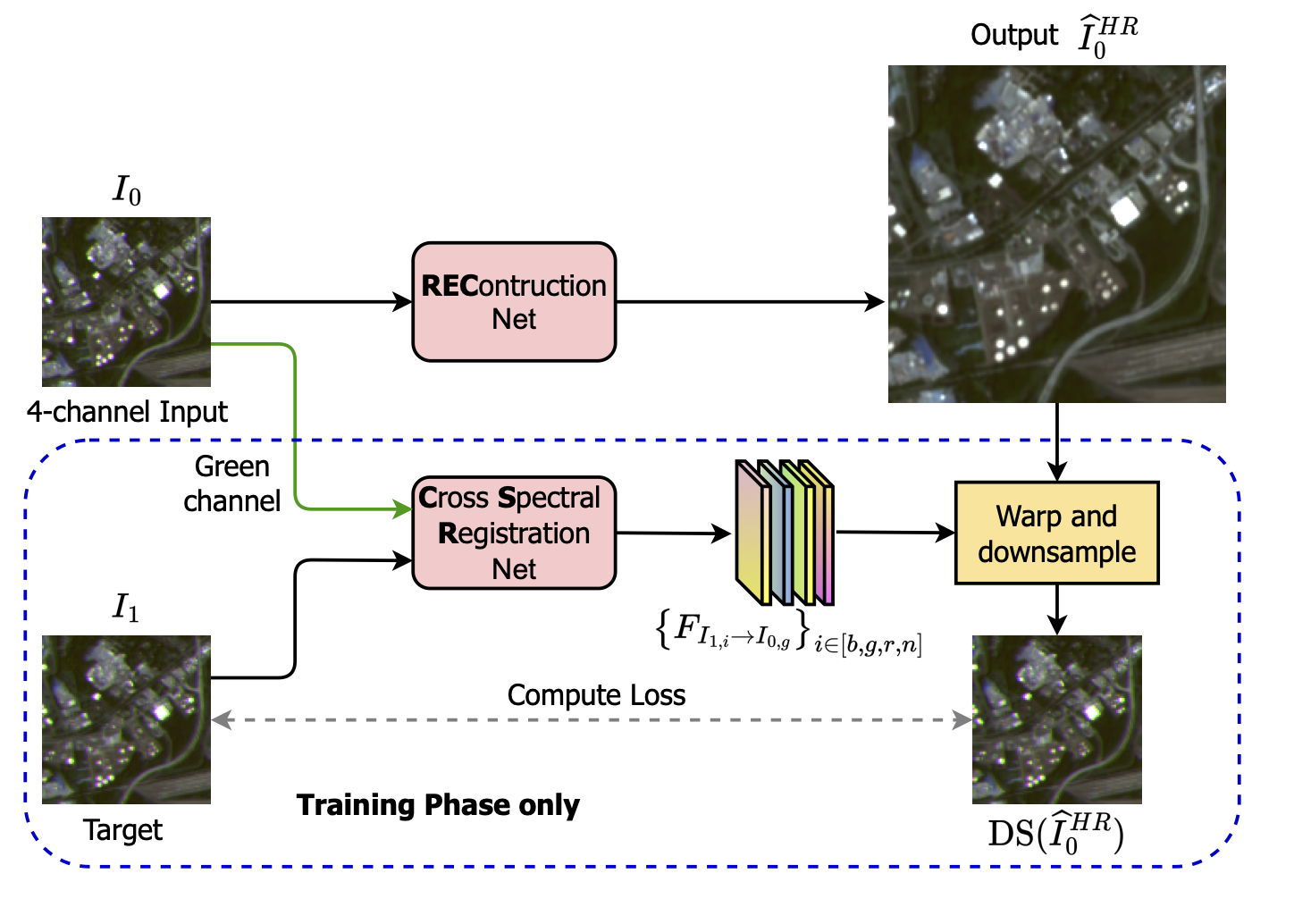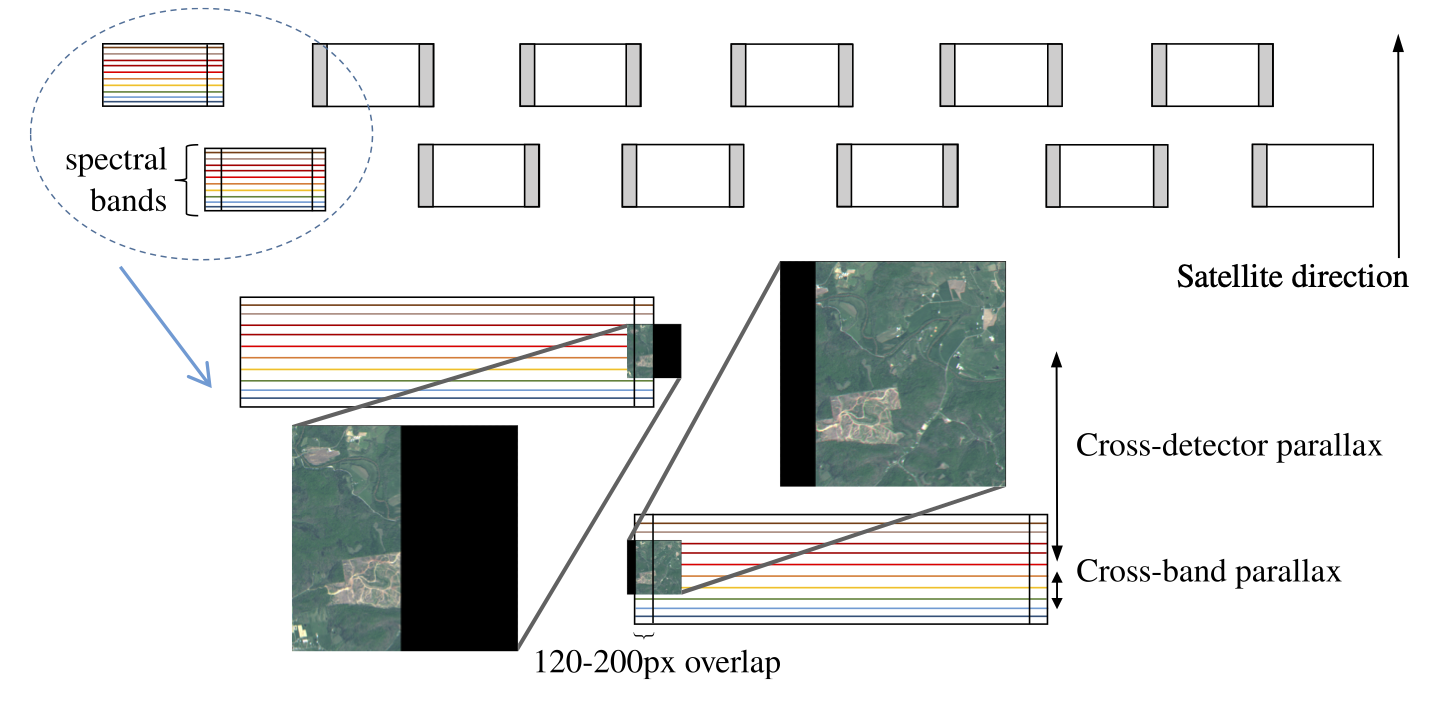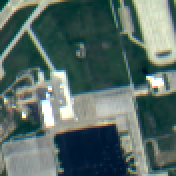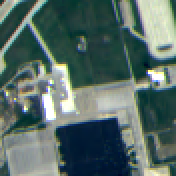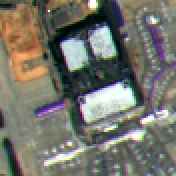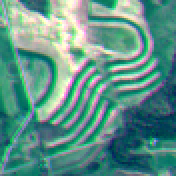|
The L1BSR dataset includes 3740 pairs of overlapping image crops extracted from two L1B products. Each crop has a height of around 400 pixels and a variable width that depends on the overlap width between detectors for RGBN bands, typically around 120-200 pixels. In addition to detector parallax, there is also cross-band parallax for each detector, resulting in shifts between bands. Pre-registration is performed for both cross-band and cross-detector parallax, with a precision of up to a few pixels (typically less than 10 pixels).
|
